- Why Potassium is Crucial for Your Potato Harvest
- Understanding the Role of Potassium in Potato Growth
- Importance of Potassium
- Effects of Potassium Deficiency
- Application of Potassium
- Conclusion
- Optimizing Potassium Levels during Flowering Stage
- 1. Conduct a soil test
- 2. Choose the right potassium fertilizer
- 3. Apply potassium fertilizer at the right time
- 4. Follow recommended application rates
- 5. Consider foliar applications
- 6. Monitor plant health
- How Potassium Enhances Flowering and Tubers Formation
- Promotes Flowering
- Improves Pollination and Fertilization
- Enhances Tubers Formation
- Summary
- The Importance of Proper Potassium Fertilization
- Key Factors to Consider when Applying Potassium to Potatoes
- 1. Soil Analysis
- 2. Potassium Content in Fertilizer
- 3. Application Timing
- 4. Application Methods
- 5. Avoid Overapplication
- 6. Water Management
- 7. Monitoring and Adjusting
- 8. Crop Rotation
- 9. Consultation with Experts
- Boosting Potassium Uptake through Soil Amendments
- Best Practices for Applying Potassium Fertilizers
- Maximizing Your Potato Harvest with Potassium-Rich Soil
- Why is Potassium Important for Potato Growth?
- Benefits of Potassium-Rich Soil
- How to Enhance Soil Potassium Levels
- Conclusion
- “Question-Answer”
- Why is potassium important for potato plants?
- When should I apply potassium to my potato plants?
- How can I add potassium to my potato plants?
- What are the signs of potassium deficiency in potato plants?
- Can I apply too much potassium to my potato plants?
- Are there any natural sources of potassium for potato plants?
- What other factors should I consider for a successful potato harvest?
- “Video” #1 Tip How To Grow Potatoes for HUGE Yields
If you want to enjoy a bountiful harvest of delicious, homegrown potatoes, then it’s essential to provide your plants with the nutrients they need. One crucial nutrient that can make a significant difference in the size and quality of your potato harvest is potassium. During the flowering stage, potatoes require a higher concentration of potassium to support tuber development and growth.
Potassium plays a vital role in the overall health of potato plants and their ability to produce an abundant crop of tubers. It regulates various processes within the plant, including the uptake and transport of water, nutrient absorption, and the activation of enzymes involved in plant metabolism.
By ensuring your potato plants receive an adequate supply of potassium during the flowering stage, you can significantly increase the number and size of tubers per plant. Potassium promotes robust root development, improved water and nutrient uptake, and enhanced flower and fruit formation.
Scientific studies have shown that a potassium-rich diet during the flowering stage can boost potato yield by up to 30%. Additionally, the quality of the tubers is improved, with a higher starch content and improved resistance to diseases and pests.
So how can you provide your potato plants with the potassium they need? One effective method is applying a potassium-rich fertilizer during the flowering stage. Look for a fertilizer with a high potassium content, such as one labeled with an NPK ratio of 0-0-60. Apply the fertilizer according to the manufacturer’s instructions, making sure to spread it evenly around the base of the plants.
It’s also vital to maintain proper soil pH levels for optimal potassium uptake. Potatoes thrive in slightly acidic soil, with a pH range of 5.0 to 6.0. Regularly test the pH of your soil, and if necessary, adjust it by adding organic matter or using agricultural lime to lower the pH.
In conclusion, boosting your potato harvest with potassium during flowering is a proven way to increase the yield and quality of your tubers. By providing your potato plants with the right amount of potassium and maintaining proper soil pH, you can enjoy a bountiful harvest of homegrown potatoes that are full of flavor and nutrition. So don’t delay, start supporting your potato plants with potassium today!
Why Potassium is Crucial for Your Potato Harvest
Potassium is a vital nutrient for the proper growth and development of potato plants. It plays a crucial role in various physiological processes, especially during the flowering stage, when the plants require more energy and nutrients to produce tubers.
1. Improved Disease Resistance: Potassium strengthens the plant’s immune system, making it more resistant to diseases and pests. It helps the potato plants fight off common pathogens, such as late blight and blackleg, which can significantly reduce the yield and quality of the tubers.
2. Enhanced Photosynthesis: Potassium is an essential component of the enzyme systems involved in photosynthesis. It helps the potato plants convert sunlight into energy, thus promoting increased growth rates and overall plant health.
3. Increased Tubers Yield: Potassium stimulates the development and growth of tubers, ensuring a bountiful harvest. It helps the plants allocate more energy and resources towards tuber formation, resulting in larger, healthier potatoes.
4. Improved Nutrient Uptake: Potassium plays a vital role in regulating the uptake and utilization of other nutrients, such as nitrogen and phosphorus. It aids in the transportation of these nutrients within the plant, ensuring their proper distribution and utilization for optimal growth and tuber development.
5. Better Water Efficiency: Potassium helps potato plants maintain proper water balance within their cells. This enables them to withstand periods of drought or excessive moisture, reducing the risk of water-related stress and promoting better overall plant health.
6. Enhanced Overall Plant Health: Adequate potassium levels in the soil promote strong root development, sturdy stems, and healthy foliage. This leads to improved nutrient absorption, efficient photosynthesis, and overall stronger, healthier potato plants.
In conclusion, potassium is crucial for your potato harvest, as it improves disease resistance, enhances photosynthesis, increases tuber yield, improves nutrient uptake, enhances water efficiency, and promotes overall plant health. By ensuring sufficient potassium levels in your soil and providing proper potassium supplementation during the flowering stage, you can maximize your potato harvest and enjoy a bountiful bucket of tubers per plant!
Understanding the Role of Potassium in Potato Growth
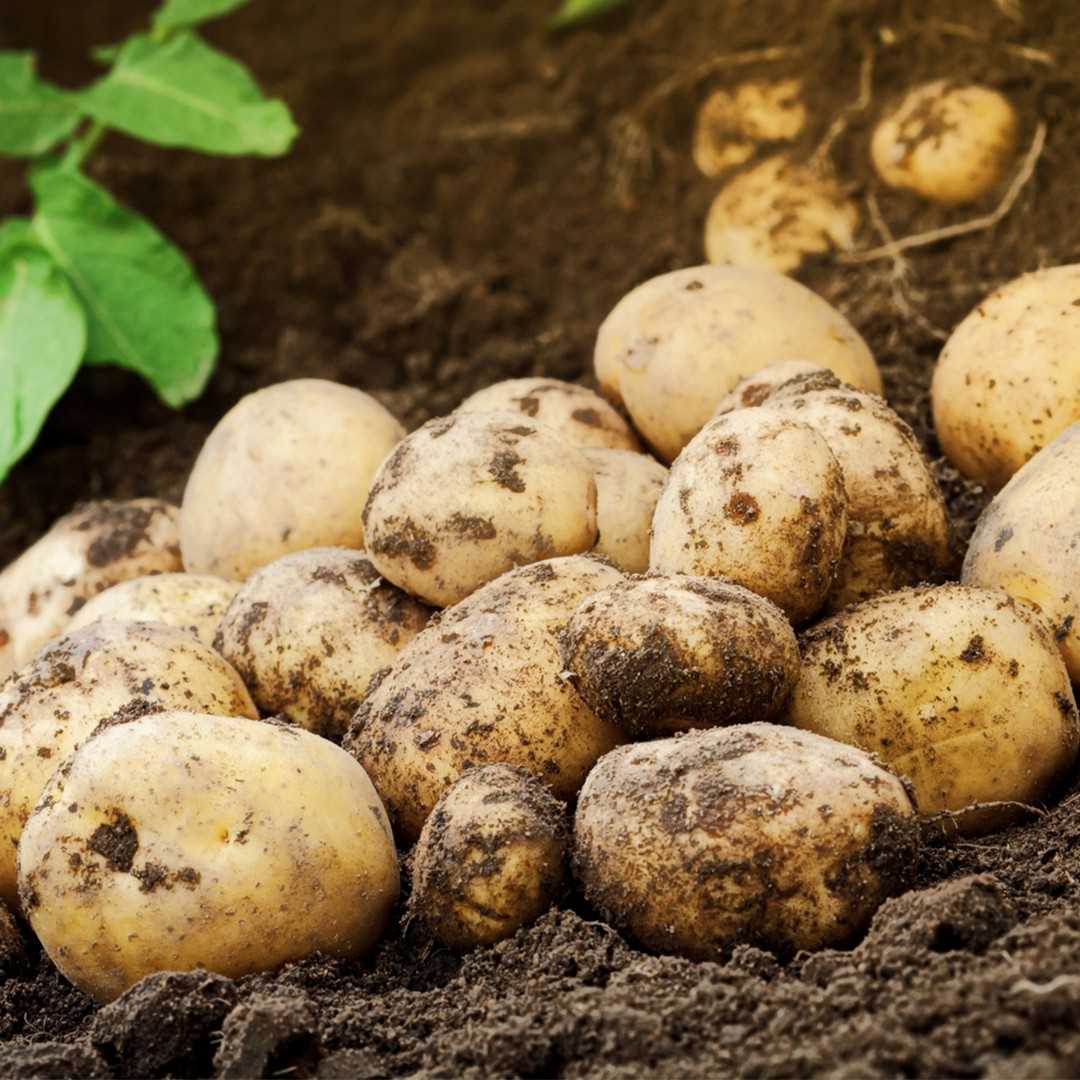
Potassium, a vital nutrient for plants, plays a crucial role in the growth of potatoes. Understanding its role in potato growth is essential for achieving a bountiful harvest.
Importance of Potassium
Potassium is one of the three essential macronutrients required by plants, including potatoes, for optimal growth. It is involved in various physiological and metabolic processes that are necessary for plant development.
Potassium helps plants regulate water movement and maintain turgidity, which is especially important during tuber development. It also enhances the plant’s resistance to drought, diseases, and pests, ensuring a healthy potato crop.
Effects of Potassium Deficiency
A lack of potassium in potato plants can lead to several adverse effects on growth and tuber development. Some common symptoms of potassium deficiency include:
- Stunted growth
- Yellowing of leaves
- Poor tuber quality and yield
- Increased susceptibility to diseases
Potassium deficiency can significantly impact the overall health and productivity of potato plants. It is crucial to address this deficiency through proper nutrient management.
Application of Potassium
Applying potassium to potato plants at the right stage can help improve tuber development and maximize yield. The flowering stage is a critical time to provide potassium to the plants.
Foliar application of potassium can be an effective method to ensure its availability to the plants. Applying a potassium-rich fertilizer directly on the leaves allows for quick absorption and utilization by the plants.
It is also important to consider the soil’s potassium levels before planting. Conducting a soil test and amending the soil with potassium-rich fertilizers, if necessary, can help maintain adequate nutrient levels throughout the growing season.
Conclusion
Potassium plays a vital role in potato growth and development. Understanding its importance and addressing potential deficiencies through proper nutrient management can contribute to a bountiful harvest of high-quality potatoes.
Optimizing Potassium Levels during Flowering Stage
Potassium is an essential nutrient for potato plants, especially during the flowering stage. It plays a vital role in the overall growth and development of tubers. Optimizing potassium levels during this stage can significantly increase your potato harvest and ensure a bountiful bucket of tubers per plant. Here are some tips for optimizing potassium levels during the flowering stage:
1. Conduct a soil test
Before you begin applying potassium, it is essential to know the current potassium levels in your soil. Conduct a soil test to determine the existing potassium levels. The test will also help you understand the pH level of the soil and its overall fertility. Based on the test results, you can make necessary adjustments to optimize potassium levels.
2. Choose the right potassium fertilizer
Once you have determined the current potassium levels, choose a potassium fertilizer that matches the needs of your potato plants. There are various types of potassium fertilizers available, such as potassium sulfate, potassium chloride, and potassium nitrate. Consider the pH level of your soil and the specific requirements of your potato variety when selecting a fertilizer.
3. Apply potassium fertilizer at the right time
Timing plays a crucial role in optimizing potassium levels during the flowering stage. It is essential to apply potassium fertilizer at the right time to ensure the plants receive the necessary nutrients when they need them the most. Generally, it is recommended to apply potassium fertilizer a few weeks before flowering begins to provide adequate time for it to be absorbed by the plants.
4. Follow recommended application rates
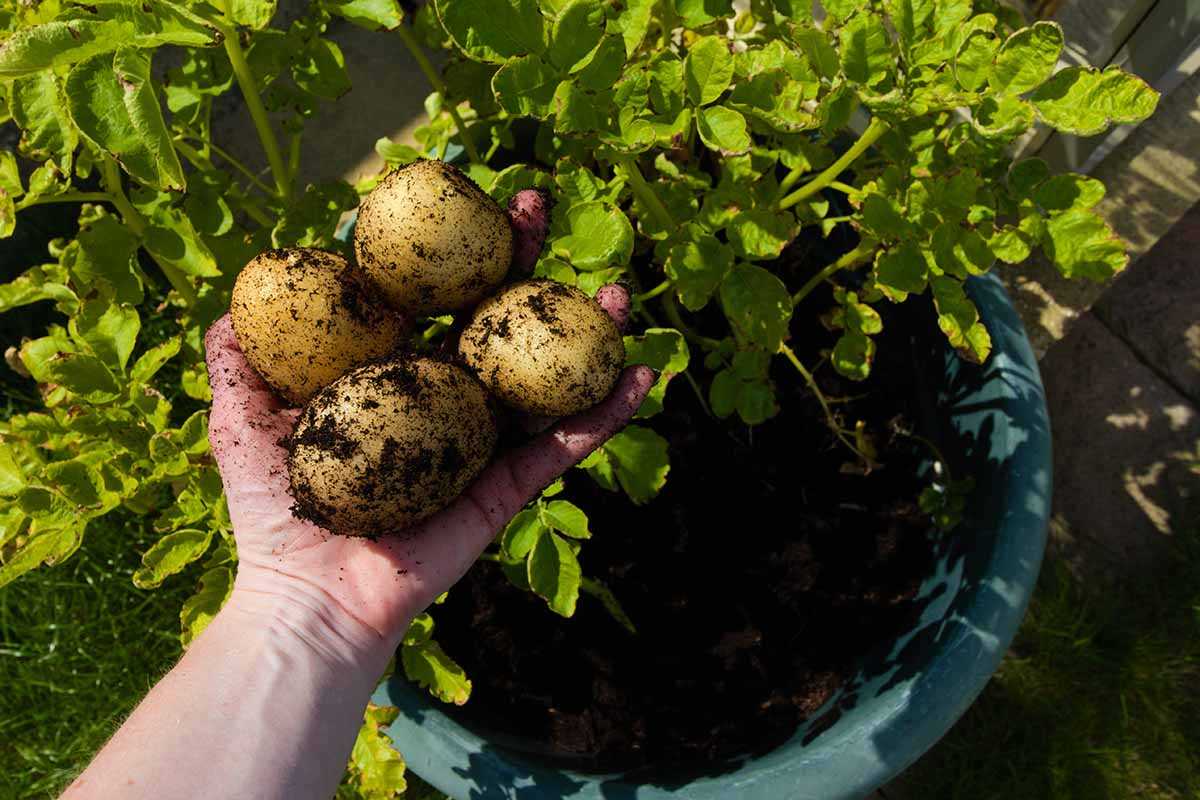
Applying the right amount of potassium is vital to avoid over-fertilization or under-fertilization. Follow the recommended application rates based on the soil test results and the specific needs of your potato plants. Over-fertilization can lead to potassium toxicity, while under-fertilization can result in nutrient deficiencies.
5. Consider foliar applications
In addition to soil application, foliar applications can also help optimize potassium levels during the flowering stage. Foliar sprays can be applied directly to the leaves, allowing the plants to absorb the potassium quickly. This method is especially useful if there are signs of potassium deficiency during the flowering stage.
6. Monitor plant health

Throughout the flowering stage, it is crucial to monitor the overall health and appearance of your potato plants. Look for any signs of nutrient deficiencies or excesses, such as yellowing leaves, stunted growth, or wilting. Adjust the potassium levels accordingly if you notice any issues.
By optimizing potassium levels during the flowering stage, you can maximize the yield and quality of your potato harvest. Follow these tips and techniques to ensure a bountiful bucket of tubers per plant!
How Potassium Enhances Flowering and Tubers Formation
Potassium plays a crucial role in the flowering and tuber formation process of potato plants. Its presence in sufficient amounts is essential for the overall growth and development of the plant.
Promotes Flowering
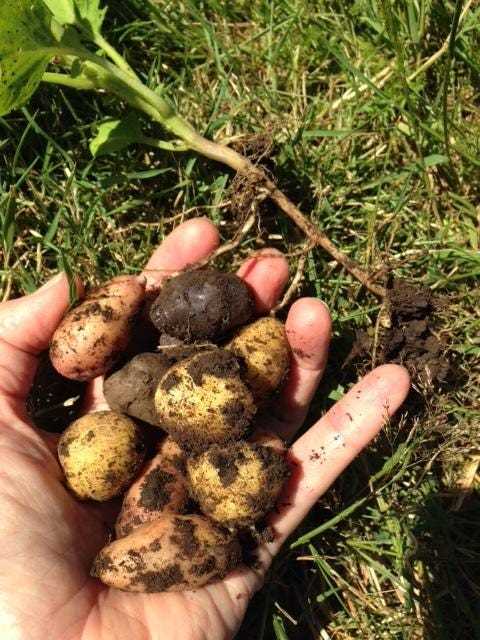
Potassium is involved in various physiological processes within the plant, including the signaling and regulation of flowering. It helps stimulate the production of flower buds and enhances their development, leading to a more abundant and vigorous flowering.
By ensuring an adequate potassium supply, potato plants can achieve optimal flowering, which is essential for successful pollination and the formation of tubers.
Improves Pollination and Fertilization
Potassium also plays a role in improving pollination and fertilization in potato plants. It affects the production and quality of pollen, which is crucial for successful pollination and the formation of healthy seeds.
When potato plants receive sufficient potassium, they produce more and better-quality pollen, increasing the chances of successful fertilization. This, in turn, contributes to the formation of more and healthier tubers.
Enhances Tubers Formation
The availability of potassium during the tuber initiation and development stages is vital for the formation of high-quality potatoes.
Potassium assists in the translocation of carbohydrates from the leaves to the growing tubers. It plays a role in regulating various metabolic processes related to starch formation and nutrient storage within the tubers.
When potato plants receive an adequate potassium supply, they can develop larger, denser, and healthier tubers. This leads to a higher yield of quality potatoes per plant.
Summary
Potassium is a key nutrient that enhances flowering and tuber formation in potato plants. It promotes flower bud production, improves pollination and fertilization, and helps develop larger and healthier tubers. By ensuring an adequate potassium supply, growers can increase their potato harvest and achieve bountiful yields.
The Importance of Proper Potassium Fertilization
Potassium is an essential nutrient for all plants, including potatoes. It plays a vital role in various physiological processes and overall plant health. Proper potassium fertilization is crucial for ensuring a bountiful potato harvest.
1. Enhances Root Development: Potassium helps in strengthening the root system of potato plants, leading to better nutrient uptake and overall plant health. A well-developed root system allows the plant to access water and nutrients more efficiently, promoting healthy growth and increased tuber production.
2. Improves Disease Resistance: Potassium is known for its role in enhancing the plant’s immune system. A potassium-rich environment helps potato plants to ward off diseases and pests more effectively. It strengthens the plant’s cell walls, making them more resistant to fungal and bacterial infections.
3. Enhances Flowering and Tuber Formation: Potassium is particularly important during the flowering stage of potato plants. It facilitates the formation of flowers and promotes proper pollination, which is essential for tuber development. Adequate potassium levels ensure the plant’s energy is directed towards producing robust tubers.
4. Supports Nutrient Transport and Photosynthesis: Potassium plays a significant role in the transportation of other essential nutrients throughout the plant. It helps in the movement of water, carbohydrates, and other nutrients from the leaves to different parts of the plant, including the developing tubers. Potassium also aids in the process of photosynthesis by activating enzymes involved in the conversion of light energy into chemical energy.
5. Increases Quality and Shelf Life of Potatoes: Proper potassium fertilization can improve the quality and shelf life of harvested potatoes. Adequate potassium levels promote tuber maturity, resulting in better taste, texture, and nutritional content. It also helps in reducing post-harvest losses by enhancing the storage capacity of potatoes.
It is important to note that the application of potassium fertilizer should be done carefully, as excessive amounts can be detrimental to plant health. Conducting soil tests and following recommended application rates can help ensure the proper balance of potassium for optimal potato growth and yield.
Key Factors to Consider when Applying Potassium to Potatoes

1. Soil Analysis
Before applying potassium to potatoes, it is important to conduct a soil analysis to determine the existing levels of potassium and other nutrients in the soil. This analysis will help you understand the specific nutrient requirements of your potato plants and enable you to make informed decisions about fertilization.
2. Potassium Content in Fertilizer
Choose a fertilizer with a balanced ratio of nutrients, including potassium. Look for a fertilizer that has a high percentage of potassium, as this will ensure that your potato plants receive an adequate supply of this essential nutrient.
3. Application Timing
The timing of potassium application is crucial for optimal potato growth. It is recommended to apply potassium during the flowering stage of potato plants. This is when the plants have the greatest demand for nutrients, including potassium, as they are diverting energy towards tuber development.
4. Application Methods
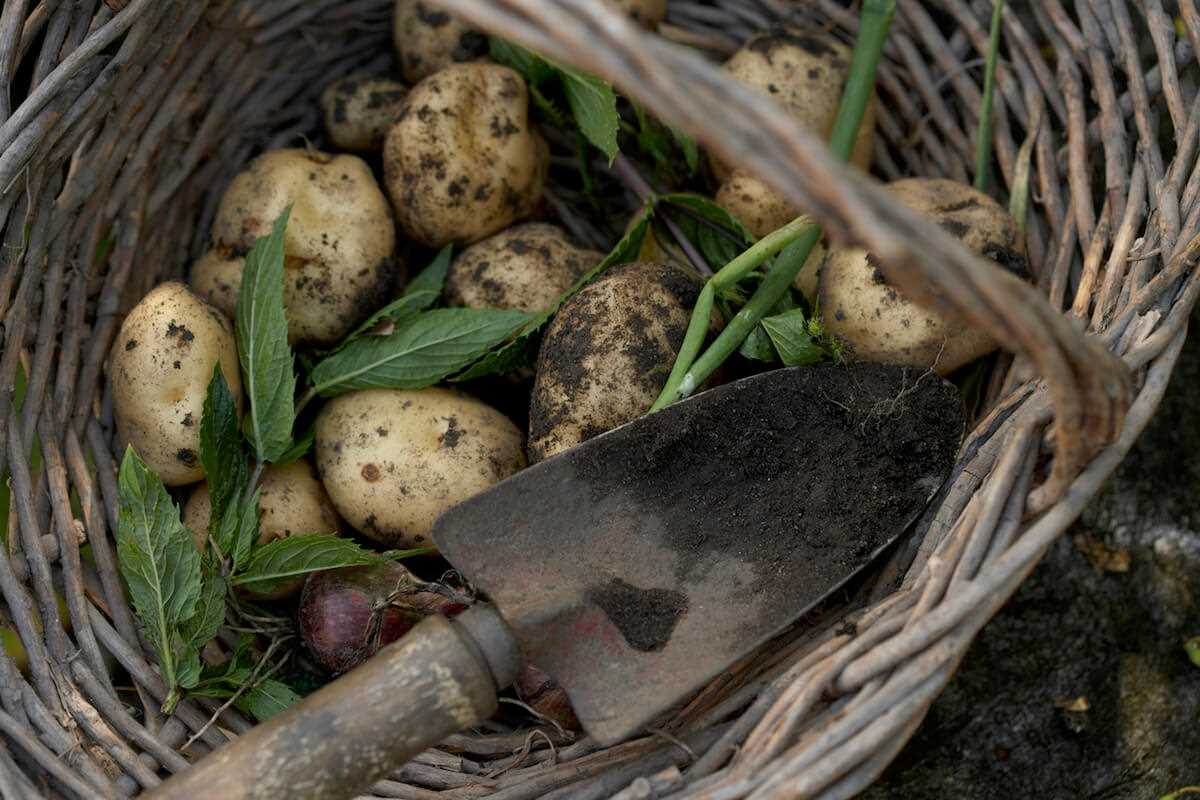
There are several methods you can use to apply potassium to your potato plants. One common method is broadcasting, where you spread the fertilizer evenly over the soil surface. You can also use banding, where you apply the fertilizer in a narrow band near the base of the plants. Another option is sidedressing, where you apply the fertilizer in a shallow trench alongside the rows of potatoes.
5. Avoid Overapplication
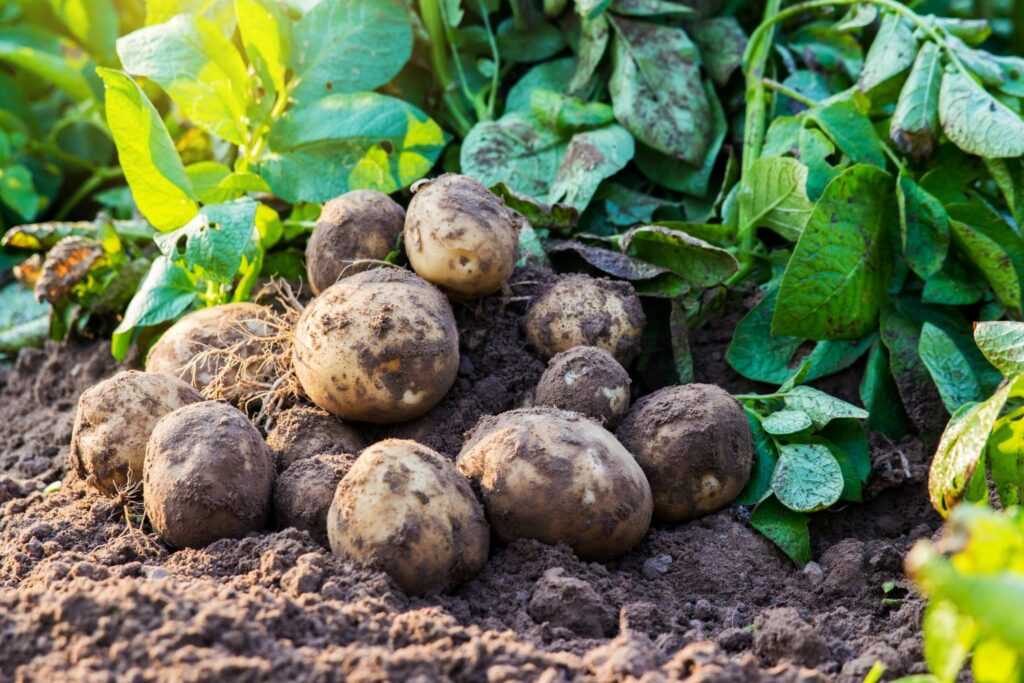
While potassium is essential for potato growth, it is important not to overapply it. Excessive amounts of potassium can interfere with the uptake of other nutrients, such as calcium and magnesium, and can lead to imbalances in the soil. Follow the recommended application rates and consider the nutrient requirements of your specific potato variety.
6. Water Management
Proper water management is crucial for the efficient uptake of potassium by potato plants. Make sure your plants receive adequate moisture, but avoid overwatering, as this can lead to leaching of nutrients, including potassium, from the soil.
7. Monitoring and Adjusting
Regularly monitor the growth and health of your potato plants to assess their nutrient requirements. If you notice any signs of nutrient deficiencies or imbalances, such as yellowing leaves or stunted growth, adjust the potassium application accordingly.
8. Crop Rotation
Implementing a crop rotation strategy can also help optimize potassium utilization by potato plants. Avoid planting potatoes in the same area of the garden year after year to prevent the depletion of potassium in the soil. Rotate with nitrogen-fixing legumes or other crops that have lower potassium demands.
9. Consultation with Experts
If you are unsure about the specific nutrient requirements and potassium application rates for your potato plants, it is always beneficial to consult with local agricultural extension services or experts in the field. They can provide valuable guidance based on regional conditions and best practices.
Boosting Potassium Uptake through Soil Amendments
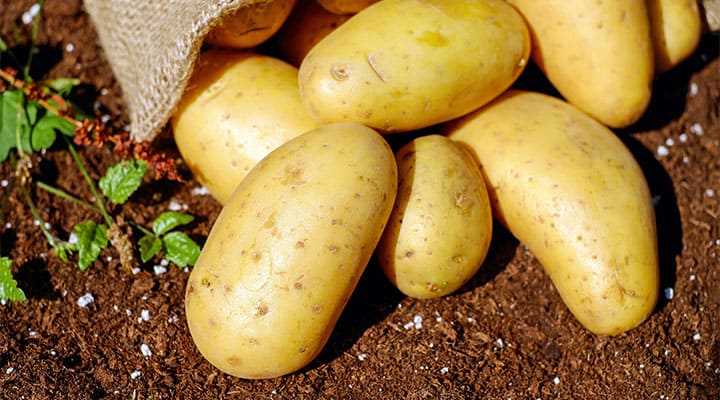
Potassium is an essential nutrient for plants, and it plays a crucial role in the development and growth of potato tubers. To maximize your potato harvest and ensure bountiful yields, it is important to boost potassium uptake through soil amendments.
1. Organic Matter
Adding organic matter to your soil can greatly improve potassium availability. Compost, well-rotted manure, and other organic materials are rich in potassium and can help replenish and improve the nutrient content of the soil. These amendments also improve soil structure and increase water retention, creating a favorable environment for potato growth.
2. Wood Ash
Wood ash is a rich source of potassium and can be used as a natural fertilizer for potato plants. It is important to note that wood ash contains high levels of alkaline substances, so it should be used sparingly and mixed into the soil thoroughly. Too much wood ash can increase soil pH levels, which can lead to nutrient imbalances and hinder potato growth.
3. Potassium-Rich Fertilizers
Using potassium-rich fertilizers can help supply the required nutrients directly to the plants. Look for fertilizers that have a higher potassium content (K) compared to nitrogen (N) and phosphorus (P). These fertilizers can be applied directly to the soil or used as a foliar spray to enhance potassium uptake during the flowering stage of potato plants.
4. Potassium Sulphate
Potassium sulphate is a water-soluble fertilizer that provides potassium in its highly available form. It can be incorporated into the soil before planting or applied as a side-dressing during the growing season. Potassium sulphate is commonly used to correct potassium deficiencies and promote robust tuber development.
5. Crop Rotation
Implementing crop rotation practices can help improve potassium availability in the soil. Planting legume crops, such as peas or beans, in the previous season can increase soil potassium levels. Legumes have the ability to fix atmospheric nitrogen and improve soil fertility. This, in turn, benefits potato plants by enhancing their potassium uptake and overall growth.
Conclusion
Boosting potassium uptake through soil amendments is crucial for achieving a bountiful potato harvest. By incorporating organic matter, using wood ash and potassium-rich fertilizers, and implementing crop rotation practices, you can ensure that your potato plants have access to an adequate supply of potassium. This will promote healthy growth, robust tuber development, and ultimately lead to an abundance of potatoes per plant.
Best Practices for Applying Potassium Fertilizers
When it comes to boosting your potato harvest with potassium fertilizers, it’s important to follow some best practices to ensure optimal results. Here are a few tips:
Know your soil’s potassium needs: Before applying any potassium fertilizer, it’s essential to test your soil to determine its potassium levels. This will help you determine the appropriate amount of fertilizer to use.
Choose the right fertilizer: There are various types of potassium fertilizers available, including potassium chloride, potassium sulfate, and potassium nitrate. Each has its own advantages and disadvantages. Consider your soil’s nutrient requirements and choose a fertilizer that suits your needs.
Apply at the right time: It’s important to apply potassium fertilizer at the right time to maximize its effectiveness. The flowering stage is a critical period for potato plants, and this is when they have an increased demand for potassium. Apply the fertilizer just before or during flowering for best results.
Follow recommended rates: Overapplication of potassium fertilizers can be harmful to plants and the environment. Follow the recommended rates provided by the fertilizer manufacturer or based on soil test results. Applying too little or too much can lead to nutrient imbalance or toxicity.
Use a balanced fertilizer: In addition to potassium, potatoes require other essential nutrients such as nitrogen and phosphorus. Consider using a balanced fertilizer that contains all the necessary nutrients to promote overall plant health and growth.
Evenly distribute the fertilizer: To ensure uniform nutrient uptake by the potato plants, it’s important to evenly distribute the potassium fertilizer. This can be achieved by properly mixing it into the soil or using a spreader for larger areas.
Monitor plants for signs of deficiency or excess: Keep a close eye on your potato plants after applying the potassium fertilizer. Look for any signs of nutrient deficiency or excess, such as yellowing leaves or stunted growth. Adjust your fertilizer application if needed.
By following these best practices, you can effectively apply potassium fertilizers to boost your potato harvest and achieve a bountiful bucket of tubers per plant!
Maximizing Your Potato Harvest with Potassium-Rich Soil
Potatoes are a versatile and nutritious staple in many diets. Whether you enjoy them mashed, fried, or roasted, growing your own potatoes can be a rewarding experience. One key factor in maximizing your potato harvest is cultivating potassium-rich soil. Potassium is an essential nutrient that plays a vital role in potato growth and development.
Why is Potassium Important for Potato Growth?
Potassium is a macronutrient that is necessary for various plant functions. It is particularly important during the flowering stage of potato growth. Potassium helps regulate water uptake and utilization in plants, which is crucial for proper tuber development. Additionally, it enhances photosynthesis, enzyme activation, and overall plant health.
Benefits of Potassium-Rich Soil
1. Increased Tuber Development: Potassium promotes the formation and growth of healthy tubers. It aids in carbohydrate transportation and storage, resulting in larger and higher quality potatoes.
2. Disease Resistance: Potassium strengthens plants’ immune systems, making them more resistant to diseases and pests. It helps build cell walls, improving plant structure and providing a natural defense.
3. Improved Nutrient Uptake: Adequate potassium levels ensure efficient absorption of other essential nutrients, such as nitrogen and phosphorus. This promotes overall plant health and maximizes yield potential.
How to Enhance Soil Potassium Levels
1. Choose the Right Fertilizer: Use a fertilizer with a high potassium content, such as one labeled with an NPK ratio of 10-10-20 or 5-10-15. Apply it evenly across the planting area before planting your potatoes.
2. Organic Matter: Incorporate organic matter, such as compost or well-rotted manure, into the soil. Organic matter releases potassium slowly over time, providing a steady supply for your potato plants.
3. Crop Rotation: Practice crop rotation by planting potatoes in a different area each year. This helps prevent nutrient depletion and reduces the risk of diseases and pests associated with continuous potato cultivation.
Conclusion
In conclusion, maximizing your potato harvest starts with ensuring your soil is rich in potassium. By providing your potato plants with adequate potassium levels, you can enhance tuber development, improve disease resistance, and optimize nutrient uptake. Follow the recommended practices, and you’ll be on your way to a bountiful bucket of tubers per plant!
“Question-Answer”
Why is potassium important for potato plants?
Potassium is essential for potato plants as it plays a crucial role in the overall development and growth of the plant. It helps in the transportation of nutrients, photosynthesis, and water regulation. Additionally, potassium improves the quality and yield of the potatoes.
When should I apply potassium to my potato plants?
It is best to apply potassium to your potato plants during the flowering stage. This is a critical time for the plants as they require a high amount of potassium for proper tuber development. Applying potassium during this stage will ensure that your potato plants have enough nutrients to produce a bountiful harvest.
How can I add potassium to my potato plants?
There are different ways to add potassium to your potato plants. One common method is to use potassium-rich fertilizers or organic matter, such as compost or manure, that contains high levels of potassium. You can also consider using potassium sulfate or potassium chloride as a supplement. It is important to follow the recommended dosage and application instructions for these additives.
What are the signs of potassium deficiency in potato plants?
Potassium deficiency in potato plants can be identified by observing certain signs. These include yellowing or browning of the leaf margins or edges, stunted growth, and decreased tuber size. The plants may also exhibit increased susceptibility to diseases and pests. It is important to address potassium deficiency promptly to prevent further damage to the plants and ensure a successful harvest.
Can I apply too much potassium to my potato plants?
While potassium is important for potato plants, applying too much potassium can have negative effects. Excessive potassium can lead to imbalances in soil pH and nutrient uptake, which can affect plant growth and overall health. It is crucial to follow recommended dosage guidelines and conduct soil tests to determine the appropriate amount of potassium needed for your potato plants.
Are there any natural sources of potassium for potato plants?
Yes, there are several natural sources of potassium that can be beneficial for potato plants. Organic matter such as compost and manure contains potassium and other essential nutrients. Additionally, some plants, such as comfrey, are known to accumulate high levels of potassium. You can make comfrey tea or use comfrey leaves as mulch to provide potassium to your potato plants in a natural and organic way.
What other factors should I consider for a successful potato harvest?
While potassium is important for a successful potato harvest, there are other factors to consider as well. These include proper soil preparation, regular watering, pest and disease management, and timely harvesting. Additionally, selecting the right potato varieties for your growing conditions and climate can greatly impact the overall yield and quality of your harvest.







